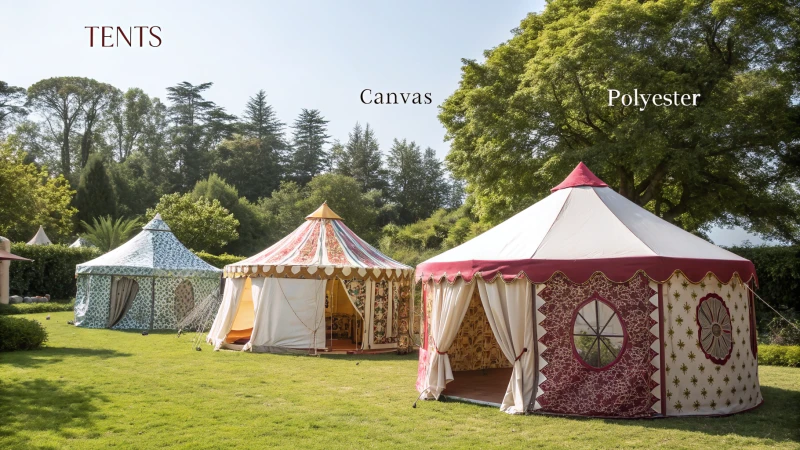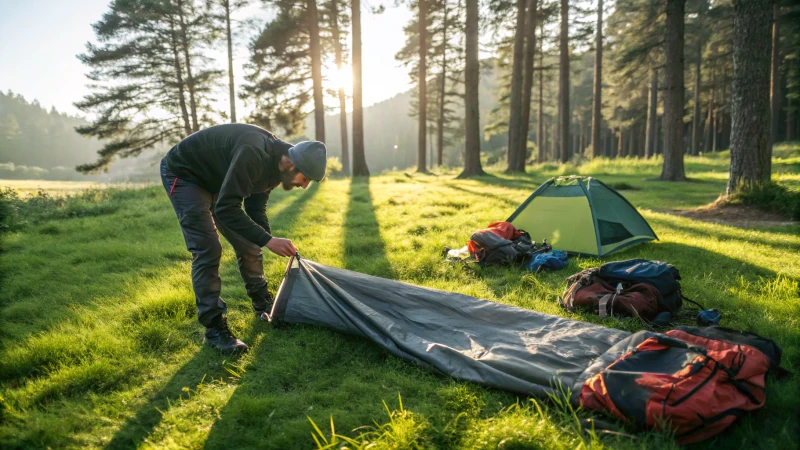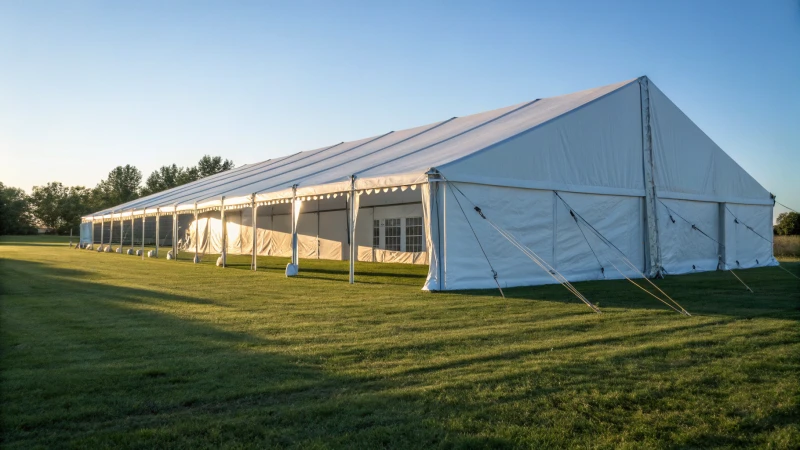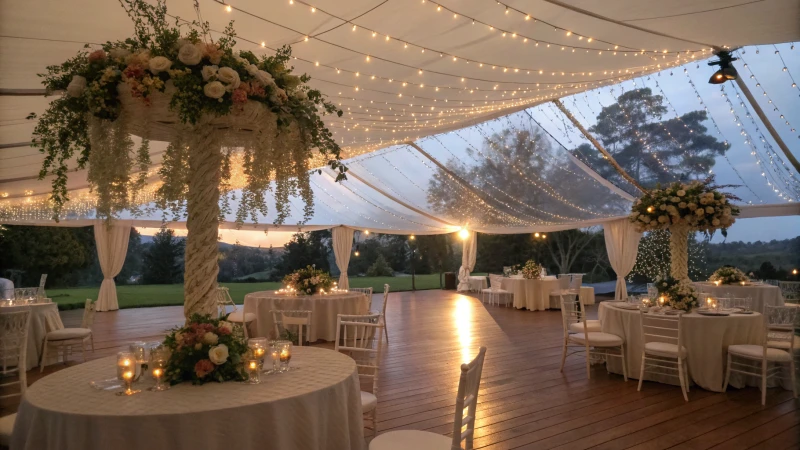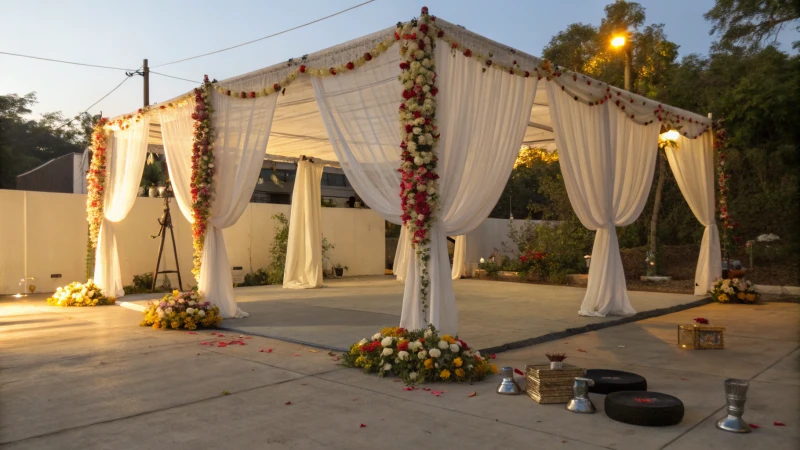
Choosing the right party tent feels like setting the stage for your entire event’s vibe.
To choose the perfect party tent, consider the event type, guest count, venue specifics, weather conditions, and budget. Evaluate tent styles like frame or high-peak tents for their suitability in design and functionality. Ensure that the tent offers adequate space, stability, and weather resistance while aligning with your aesthetic preferences.
I remember planning my first outdoor event—it felt like a whirlwind of decisions. The tent was the centerpiece, shaping not just the look but the feel of the gathering. Knowing what to prioritize made all the difference. Dive into each factor to tailor your tent choice perfectly to your needs.
Event type is crucial for tent selection.True
Different events require specific tent styles and sizes.
Weather conditions don't affect tent choice.False
Weather impacts tent stability and design choice.
How Does the Type of Event Influence Your Tent Choice?
Ever wondered why the type of event you’re planning matters so much when choosing a tent?
The type of event you’re hosting significantly influences your tent choice, affecting size, style, and functionality. A wedding might need an elegant high-peak tent for aesthetics, whereas a corporate event could benefit from a spacious frame tent for presentations and equipment.
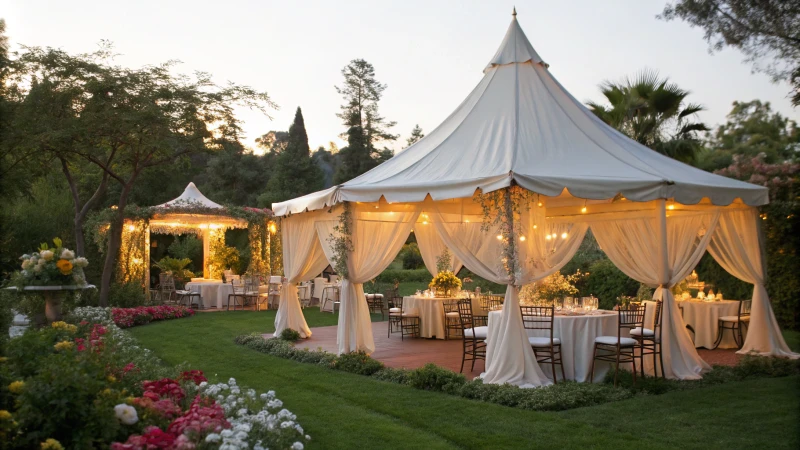
Event Purpose and Tent Style
I remember planning my sister’s wedding and realizing how crucial it was to pick the right tent. We wanted that fairy-tale vibe, so we went for an elegant high-peak tent1 to create a sophisticated look that had everyone in awe. On the other hand, when I organized a corporate event last year, those frame tents2 were lifesavers—unrestricted space meant we could fit all the seating and displays without a hitch.
Guest Count and Space Requirements
Thinking back to our family reunion, I underestimated how much space we’d need! We barely had room to dance. Now, I always allocate about ten square feet per person for seated events. It’s amazing how these little details make a big difference. Here’s a handy table I use:
| Event Type | Space Per Person | Additional Features |
|---|---|---|
| Wedding | 10 sq ft | Dance floor, decor |
| Corporate Event | 8 sq ft | Presentation areas |
| Festival | 5-6 sq ft | Vendor booths, stages |
Venue Considerations
Choosing a location is like picking the right shoes for an outfit—it can make or break the whole thing. From my experience, setting up on a beach required more stakes for stability, while urban settings needed weights. One time, I forgot about this and spent half the event worrying about the wind! Thankfully, tent ballasting systems3 have saved me ever since.
Budget and Tent Types
Budgeting for tents can be tricky. I’ve learned that while canopy tents are budget-friendly, larger events call for options like industrial tents4. It’s all about balancing cost with the event’s needs. And don’t forget those hidden setup fees!
Weather Conditions
Weather is unpredictable—I’ve had events where it rained cats and dogs! Now, I never compromise on weather resistance. Durable materials like polyester or canvas can withstand wind and rain, while HVAC systems keep everyone comfy.
Setup and Portability
With tight schedules, I always opt for user-friendly tents like A-frame or pre-assembled designs. It’s all about efficiency, especially if you plan to move venues. I’ve learned that portability is key—trust me, your stress levels will thank you!
High-peak tents are ideal for weddings.True
High-peak tents provide elegance and space, suitable for wedding decor.
Corporate events need 10 sq ft per person.False
Corporate events typically require 8 sq ft per person, not 10.
How Do You Determine Space and Capacity Needs for Your Event?
Ever found yourself drowning in details while planning an event? You’re not alone. I’ve been there, juggling guest lists and venue logistics, making sure everything fits perfectly.
For any event, the space and capacity requirements hinge on factors like the type of event, number of guests, seating style, and venue specifics. Generally, you should plan for 10 square feet per seated guest and 5-6 square feet per standing guest to ensure comfort.
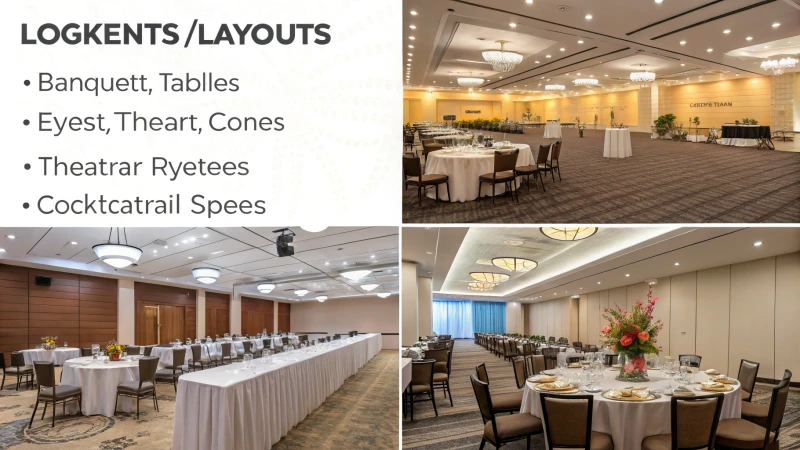
Determining Space Based on Event Type
I remember planning my first corporate meeting—it was a whirlwind! I quickly learned that different event types5 demand unique setups. For a corporate meeting, theater-style seating was key, whereas a friend’s wedding needed round tables, each setup influencing the space required.
| Event Type | Seating Arrangement | Space Needed Per Person |
|---|---|---|
| Corporate | Theater | 8 sq ft |
| Wedding | Banquet | 10 sq ft |
| Cocktail Party | Standing | 6 sq ft |
Calculating Guest Count and Space
Accurately estimating the guest count6 felt like an art form at first. Once I got the hang of it, I knew exactly how to plan the space:
- For seated events, allocate about 10 square feet per person.
- For standing events, stick to 5 to 6 square feet per person.
And don’t forget—you might need additional space for amenities like dining areas7, dance floors, or stages.
Venue Considerations
Choosing the right venue can make or break your setup. I learned the hard way that soft grounds, like beaches, require extra reinforcement for tents, whereas hard surfaces might need special permissions for stakes. Accessibility for guests and service staff is also crucial—I’ve had my fair share of near-misses due to overlooked details.
Budget and Tent Selection
Budgeting is where it gets real. Initially, I was overwhelmed by options but learned to balance between affordable canopy tents and larger industrial structures if space allowed.
| Tent Type | Cost Level | Recommended For |
|---|---|---|
| Canopy | Low | Small gatherings |
| Frame | Medium | Versatile use |
| Industrial | High | Large events |
Weather and Accessibility
Weather can be an event planner’s worst nightmare. Ensuring the tent is weather-resistant and suitable for expected conditions is vital. Lighting and ventilation needs also play a role in enhancing guest experience.
When it all comes together, balancing space requirements, budget constraints, and venue conditions ensures a successful event where everyone feels comfortable and safe. It’s a journey I’ve navigated many times, always learning something new along the way.
A corporate meeting needs 8 sq ft per person.True
Corporate meetings often use theater seating, requiring 8 sq ft per person.
Weddings require less space per person than cocktail parties.False
Weddings need 10 sq ft per person, more than cocktail parties at 6 sq ft.
How Do Venue Conditions Affect Tent Installation?
Ever wondered why some tent setups just seem to defy gravity while others flop? It’s all about the venue conditions!
Venue conditions affect tent installation by determining anchoring methods, necessitating specific ground preparations, and influencing the choice of tent suitable for the event. Knowing these factors ensures safe and stable setups.
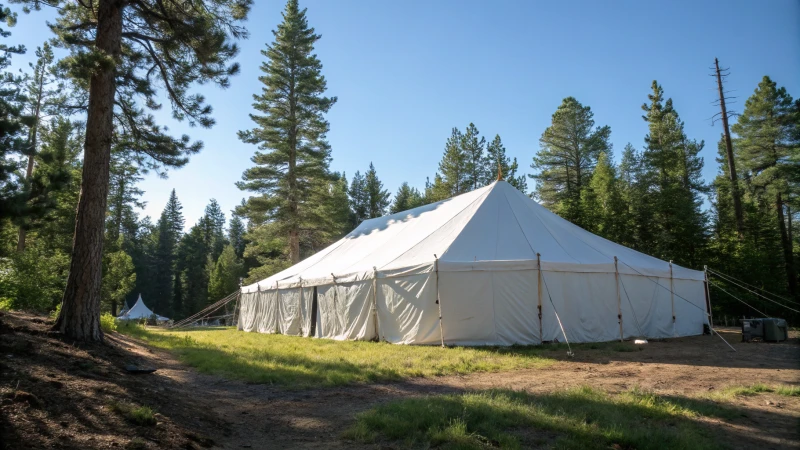
I remember the first time I set up a tent for a big outdoor event. It was a wedding on a beach, and let me tell you, the soft sand presented quite the challenge. We had to use deep stakes to ensure everything stayed in place, unlike setting up on grass where standard stakes would suffice.
The Role of Ground Type in Tent Installation
The type of ground at your venue dictates the tent’s anchoring method. Soft grounds, like beaches or grassy fields, often require more stakes8 for reinforcement to ensure stability. In contrast, hard surfaces like asphalt or concrete necessitate weights or a tent ballasting system9 to avoid damage from stakes.
Consider creating a table to evaluate ground conditions:
| Ground Type | Recommended Anchoring Method |
|---|---|
| Grass | Stakes and ropes |
| Sand | Deep stakes |
| Concrete | Weights/ballasting |
Weather Considerations
Weather conditions such as wind, rain, and temperature extremes influence tent material selection and setup strategies. High-quality weather-resistant materials like polyester or canvas should be chosen for areas with unpredictable weather. In windy areas, additional bracing might be required to prevent collapse10.
Accessibility and Logistics
Accessibility affects how tents are transported and erected at a venue. Venues with limited access require tents that are easy to transport and set up, such as frame tents. Assessing the venue’s access points and transport paths is crucial for ensuring smooth installation11.
Venue Restrictions and Permissions
Certain venues may have restrictions on tent installation. It’s essential to check if permits are needed for driving stakes into the ground or if specific anchoring methods are prohibited. Failure to comply can lead to legal issues or event disruptions.
Using markdown formatting, organize this information efficiently to better understand and plan your tent installations.
Soft grounds require more stakes for tent stability.True
Soft grounds like grass need additional stakes to secure the tent.
Concrete surfaces use stakes for tent anchoring.False
Concrete requires weights or ballasting, not stakes, for tent anchoring.
Why is budget planning essential when choosing a tent?
Imagine setting off on a camping adventure only to find your tent isn’t up to the task. Budgeting beforehand can save you from this predicament.
Budget planning in tent selection is crucial as it allows you to prioritize necessary features while staying within financial limits. By establishing a budget, you can compare tents effectively, ensuring you choose one that balances quality and cost without unexpected expenses.
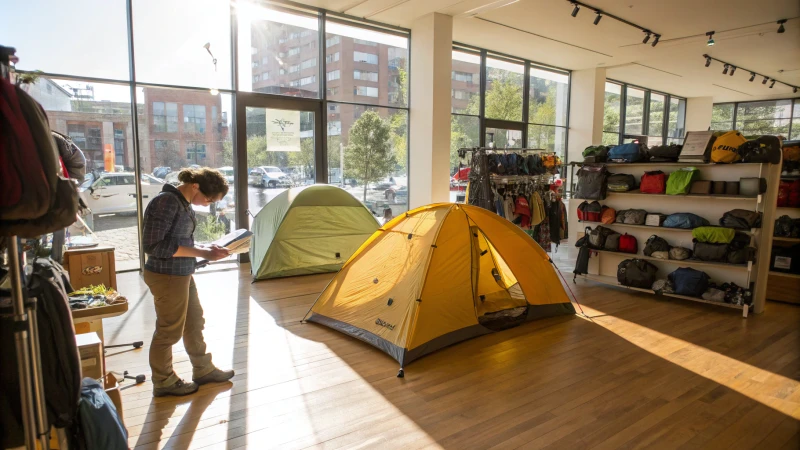
Setting Priorities Within Your Budget
When I first started planning my outdoor adventures, I quickly learned that budgeting isn’t just about saving money—it’s about making sure I get the best tent for my needs. I had to ask myself what mattered most. Was it the tent’s durability, or perhaps the size? Did I need it to withstand harsh weather? Once I figured out my priorities, spending became more strategic rather than impulsive.
Comparing Options and Features
With my budget set, comparing different tents became much easier. Use a table to assess which features align with your financial limits:
| Feature | Tent A | Tent B | Tent C |
|---|---|---|---|
| Price | $500 | $650 | $750 |
| Durability | High | Medium | Low |
| Weather Resistance | Excellent | Good | Fair |
| Size (sq. ft.) | 200 | 250 | 300 |
Avoiding Hidden Costs
It’s amazing how many little expenses can add up when planning a trip. Budgeting helped me anticipate costs like setup fees and delivery charges, or required accessories12. Knowing these in advance meant no financial surprises that could ruin my adventure.
Enhancing Financial Planning Skills
Going through this process didn’t just help me with my tent selection—it sharpened my overall financial skills. It taught me how to make better choices in other areas of my life too, like managing personal finances13 or even planning future trips.
Addressing Quality vs. Cost Dilemmas
In one of my earlier camping trips, I learned the hard way that sometimes renting can be more economical than buying. If you’re planning for a short-term event, consider all your options. A well-thought-out budget helps in making these decisions wisely.
Ensuring Vendor Accountability
Having a clear budget also means I can hold vendors accountable. It prevents them from trying to upsell me on things I don’t need. When you know exactly what you can spend, it’s easier to negotiate deals14 effectively and ensure value for money.
Budget planning helps prioritize tent features.True
Budget planning forces you to identify crucial tent aspects.
Budgeting does not prevent hidden costs in tent selection.False
Budgeting anticipates extra expenses, preventing financial stress.
Conclusion
Choosing the right party tent involves considering event type, guest count, venue conditions, weather resistance, and budget to ensure a successful and comfortable gathering.
-
Learn how high-peak tents create an elegant atmosphere suitable for weddings and formal events. ↩
-
Discover why frame tents are preferred for corporate events due to their open space and versatility. ↩
-
Understand how ballasting systems stabilize tents on various surfaces without using stakes. ↩
-
Explore the cost differences between industrial and canopy tents to make budget-friendly decisions. ↩
-
This link provides insights into various event types and their specific space requirements, helping planners choose suitable arrangements. ↩
-
Understanding how to estimate guest counts is crucial for planning. This link offers methods to predict attendance accurately. ↩
-
Knowing the space needs for amenities ensures comfort. This link explains how to allocate space for additional event features. ↩
-
Learn various staking techniques to securely anchor tents on soft grounds like grass or sand. ↩
-
Understand how a ballasting system works for anchoring tents on hard surfaces without causing damage. ↩
-
Discover effective bracing strategies to reinforce tents against strong winds during events. ↩
-
Explore solutions for managing tent setups in venues with restricted access points. ↩
-
Explore this link to understand the often-overlooked expenses involved in tent rentals and prepare accordingly. ↩
-
Learn how budgeting for one purchase can enhance your overall financial discipline and planning skills. ↩
-
Discover strategies to secure the best deals and ensure your budget is respected during negotiations. ↩


